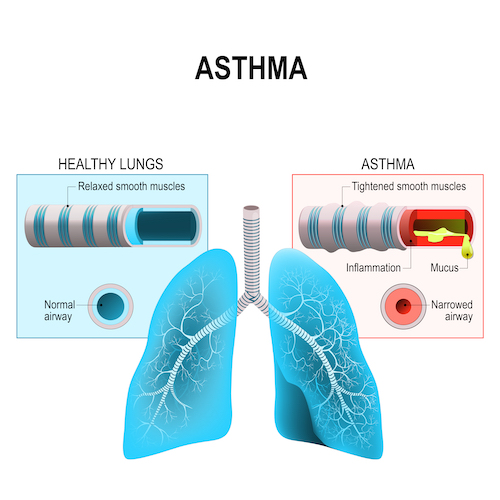
The combination of swollen glands and the inflamed bronchi and bronchioles results in a narrowed airway. This can sometimes create a wheeze or chesty cough, which is the body’s normal reaction to a narrowed airway. If you consider when you have a cold and there are extra amounts of fluid-like mucous and phlegm in your airway, your body coughs to try and remove it. However with asthma, it is actually the respiratory system inhibiting itself, so coughing does not normally actually help the problem.
So far we have only covered the typical, everyday symptoms of asthma, but let’s briefly look now at what actually happens during an asthma attack. As mentioned already, the airway of someone with asthma can be narrower simply because of the condition. However, during an asthma attack, the muscles within the bronchi and bronchioles actually contract – not just swell up, which further narrows the airway up to a dangerous point where an adequate oxygen supply to the lungs can sometimes be compromised. Furthermore, the mucous-secreting glands go into overdrive and produce an excessive amount of thick, sticky mucous. Due to this, the airways are narrowed even further and make breathing a real difficulty.
For more details on Asthma visit our video online training course at www.proasthma.co.uk

